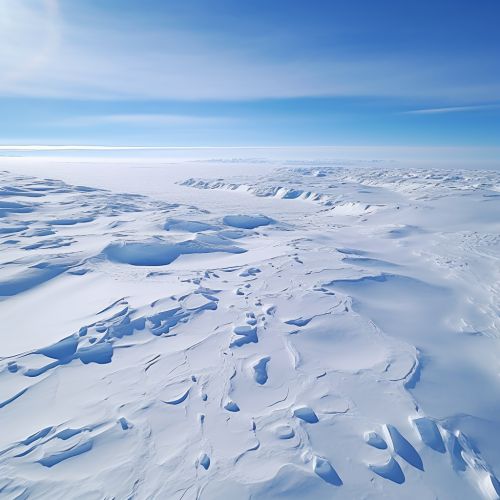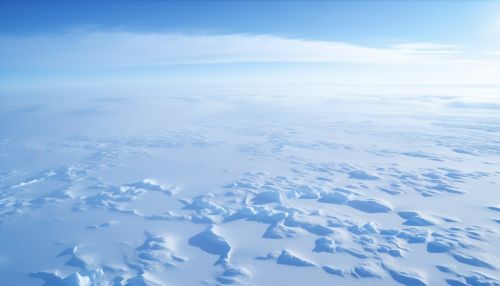Antarctic Ice Sheet
Overview
The Antarctic Ice Sheet is the largest single mass of ice on Earth, covering an area of almost 14 million square kilometers and containing 26.5 million cubic kilometers of ice. This vast ice sheet is a key component of the global climate system, playing a crucial role in Earth's heat balance and influencing sea levels and ocean currents.
Formation and Structure
The Antarctic Ice Sheet began to form around 34 million years ago, during the Eocene-Oligocene extinction event. The formation of the ice sheet was likely triggered by a decrease in atmospheric carbon dioxide levels, which led to global cooling. The ice sheet is divided into two main parts: the East Antarctic Ice Sheet (EAIS) and the West Antarctic Ice Sheet (WAIS). The EAIS is the larger of the two, covering about two-thirds of Antarctica, and is considered more stable due to its larger size and higher elevation. The WAIS, on the other hand, is more vulnerable to melting due to its lower elevation and its base being largely below sea level.


Dynamics and Movement
The Antarctic Ice Sheet is not a static entity but is constantly in motion. The movement of the ice is driven by gravity, with the ice flowing from the high interior of the continent towards the coast. This movement is facilitated by the process of basal sliding, where the ice slides over the bedrock beneath it. The speed of this movement can vary greatly, from a few meters per year in the interior of the ice sheet to several kilometers per year in the fast-flowing ice streams.
Impact on Global Climate
The Antarctic Ice Sheet plays a significant role in the global climate system. It reflects a large amount of solar radiation back into space, helping to regulate Earth's temperature. The ice sheet also stores a vast amount of water, equivalent to a sea-level rise of about 58 meters if it were all to melt. Changes in the size and volume of the ice sheet can therefore have significant impacts on global sea levels.
Current State and Future Projections
In recent decades, the Antarctic Ice Sheet has been losing mass, primarily due to increased melting from the underside of the ice shelves. This loss of ice is contributing to global sea-level rise. Future projections for the ice sheet are uncertain and depend on a range of factors, including future greenhouse gas emissions and the response of the ice sheet to warming. However, most projections suggest that the ice sheet will continue to lose mass in the coming centuries, contributing to further sea-level rise.
